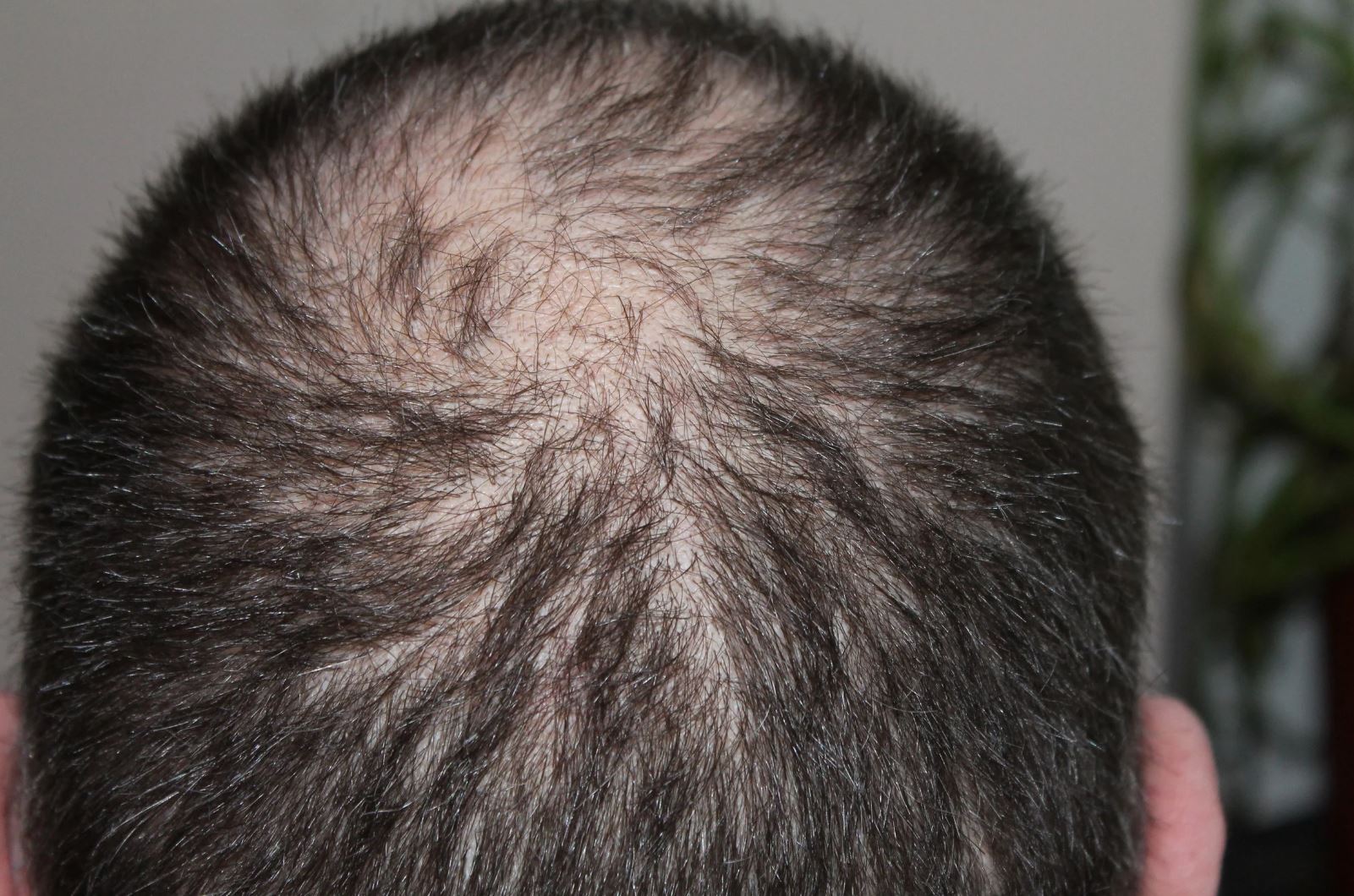Hair loss or thinning on one side of the head is a perplexing and distressing experience. In its early stages, most people are able to hide it with surrounding hair until they can’t. One-sided hair loss leaves people asking the question ‘Why is my hair thinning on one side?’ It’s a question that must be asked and we’re here to answer this question.
Why Is My Hair Thinning One Side?
Hair loss or thinning on one side of the head can have several reasons, including physical stress and psychological conditions. Here are some of the most common ones.
Alopecia Areata
Alopecia areata is an autoimmune condition that causes the body’s immune system to attack its own hair follicles resulting in pre-mature hair loss. This condition can manifest in different patterns, and sometimes it’s more pronounced on one side of the scalp.
The hair loss in alopecia areata is typically patchy and can vary in size. It’s not fully understood why alopecia areata affects one side more than the other in some cases, but it’s believed to be related to local factors within the scalp or the distribution of immune cells.
Traction Alopecia
Traction alopecia occurs due to constant pulling or tension on hair follicles, often a result of certain hairstyles like tight ponytails, braids, or weaves. When these styles are worn frequently and pulled in the same direction, they can cause hair follicles on that particular side of the head to weaken and eventually lead to hair thinning.
The degree of hair loss depends on the duration and intensity of the tension. This condition is particularly common in individuals who consistently style their hair in a way that pulls on one side more than the other.
Telogen Effluvium
Telogen effluvium is a form of temporary hair loss that occurs after stress, a shock to the system, or a traumatic event. This condition causes an increased number of hairs to enter the resting phase (telogen) of the hair growth cycle, resulting in shedding.
While this typically affects the entire scalp, it can sometimes be more noticeable on one side. Factors like sleeping habits or the way hair is styled and parted may make hair loss appear more significant on one side.
Scarring Alopecia
Scarring alopecia, also known as cicatricial alopecia, is a group of rare disorders that destroy hair follicles, replace them with scar tissue, and thus cause permanent hair loss. This type of alopecia can be localized, affecting one side of the scalp more severely.
It can be caused by a variety of disorders that involve inflammation of the hair follicles, such as lichen planopilaris and folliculitis decalvans. The inflammation that leads to scarring can occur unevenly across the scalp, resulting in one-sided thinning.
Trichotilomania
Trichotilomania is a psychological condition characterized by a compulsive urge to pull out one’s hair. Individuals with this condition may have a preferred side to pull from, often subconsciously, which can lead to noticeable hair thinning on that specific side. The severity of hair loss depends on the frequency and intensity of hair-pulling behavior.
Can Sleeping on One Side of Your Head Cause Hair Loss?
The belief that sleeping on one side of your head can cause hair loss is a common misconception. While prolonged pressure on the hair might contribute to a slight increase in shedding, it’s unlikely to cause significant thinning.
How to Treat Hair Loss on One Side of the Head
Treating one-sided hair loss involves a combination of medical interventions and lifestyle changes, depending on the underlying cause. A consultation with Dr. Keene will help you determine the cause of your hair loss and the best approach to treat it.
Physician’s Hair Institute offers some of the most effective treatment options for hair loss on one side of the head including:
Finasteride
Finasteride is an FDA-approved oral medication treating male pattern baldness. This treatment works by inhibiting the enzyme that converts testosterone to dihydrotestosterone (DHT), the hormone responsible for shrinking hair follicles, leading to hair loss.
Finasteride can slow down hair loss and even lead to regrowth, especially in cases of androgenetic alopecia. Studies showed that over 83% of men taking Propecia (finasteride) either kept their hair or stopped losing it. In 66% of men, hair thinned less noticeably, or even grew back slightly.
Minoxidil
Minoxidil is a topical treatment used by both men and women and it’s the only FDA-approved medication for treating women’s hair loss. Minoxidil works by prolonging the growth phase of hair follicles and enlarging miniaturized follicles.
It should be applied directly to the scalp, specifically in the area experiencing thinning. Results can take several months to become noticeable, and consistent use is necessary to maintain benefits.
Platelet-Rich Plasma (PRP) Therapy
PRP treatment for hair loss involves drawing the patient’s blood, processing it to enrich the platelets, and then reinjecting it into the scalp. The growth factors in platelets are thought to stimulate hair regrowth.
Multiple treatment sessions are typically required, and maintenance treatments may be necessary. PRP can be effective for certain types of hair loss, such as androgenetic alopecia, but results can vary between individuals.
Scalp Micropigmentation
Scalp micropigmentation (SMP) is a non-surgical cosmetic procedure that creates the illusion of fuller, denser hair. It uses a specialized needle and pigment to deposit tiny dots of color onto the scalp, mimicking the appearance of hair follicles.
This treatment is ideal for those with significant thinning or bald patches who want to create an illusion of denser hair. It’s quick, relatively painless, and has no significant downtime. Its only limitation is that it doesn’t stimulate hair growth but can significantly improve the appearance of hair density.
Hair Transplant
Hair transplant is a permanent solution to baldness. It involves transferring hair grafts from the donor area where hair is permanent to the thinning area. There are two main hair transplant techniques: Follicular Unit Transplantation (FUT) and Follicular Unit Extraction (FUE).
FUE involves extracting follicular units directly from the scalp and transplanting them to the recipient area. This technique does not leave a linear scar but it produces ‘dot-like’ scars which can be easily concealed when the hair grows back. However, FUE requires the back and sides of the head to be shaved short so it’s often not the option for women.
On the other hand, FUT involves removing a strip of scalp usually from the back of the head and harvesting the individual follicular units. This technique leaves a linear scar but it allows for harvesting a greater number of hair grafts so it’s more cost-effective for larger areas. The best hair transplant method depends on your unique needs, preference, and budget.
The First Step to Hair Restoration Is a Consultation.
If you’re tired of dealing with hair loss and dream of a fuller head of hair, the first step is to schedule a consultation with Arizona’s top hair transplant surgeon Dr. Sharon Keene. Physician’s Hair Institute serves patients in and around Phoenix, Scottsdale, Chandler, Glendale, Paradise Valley, Mesa, and the greater Arizona area.




